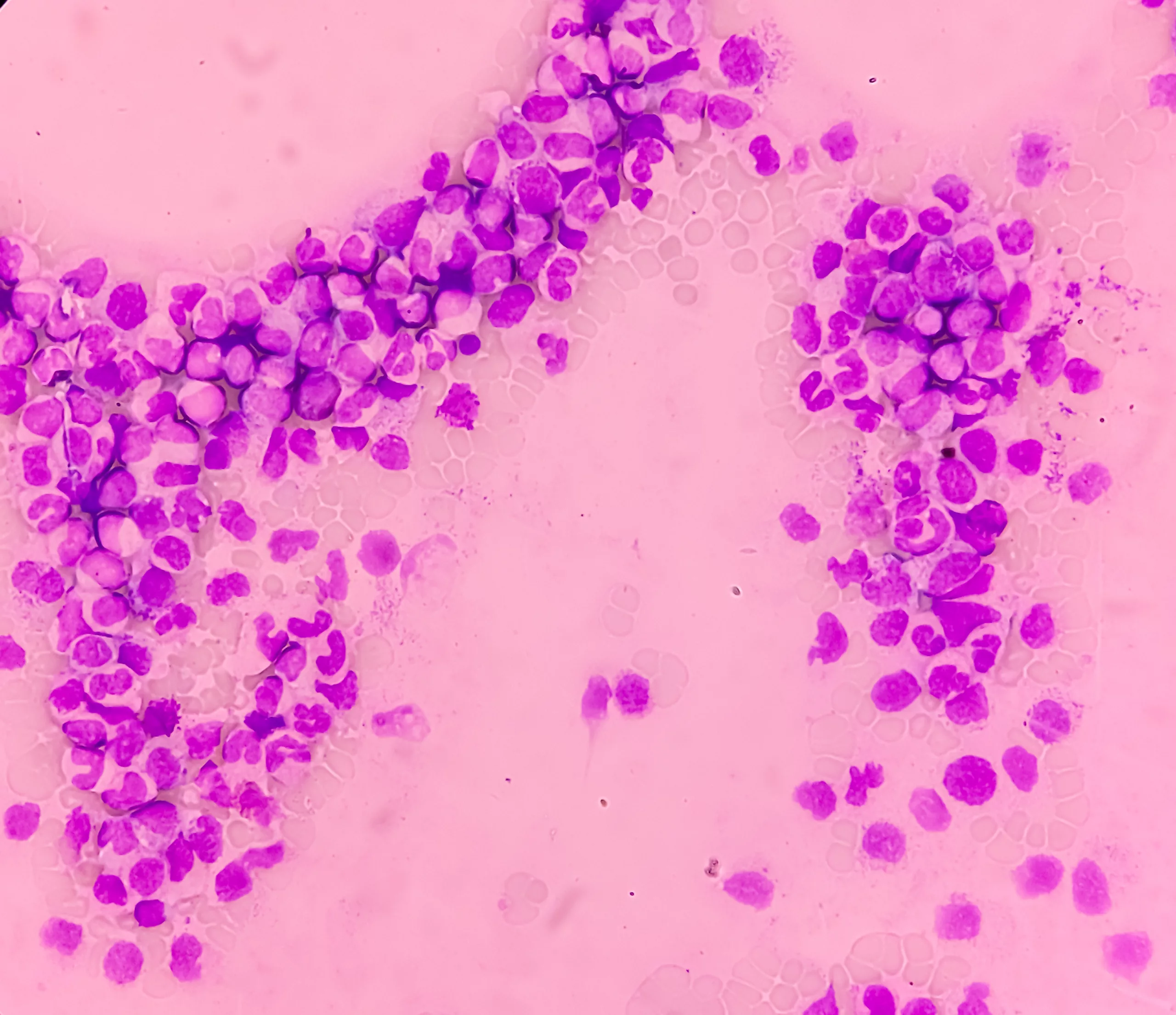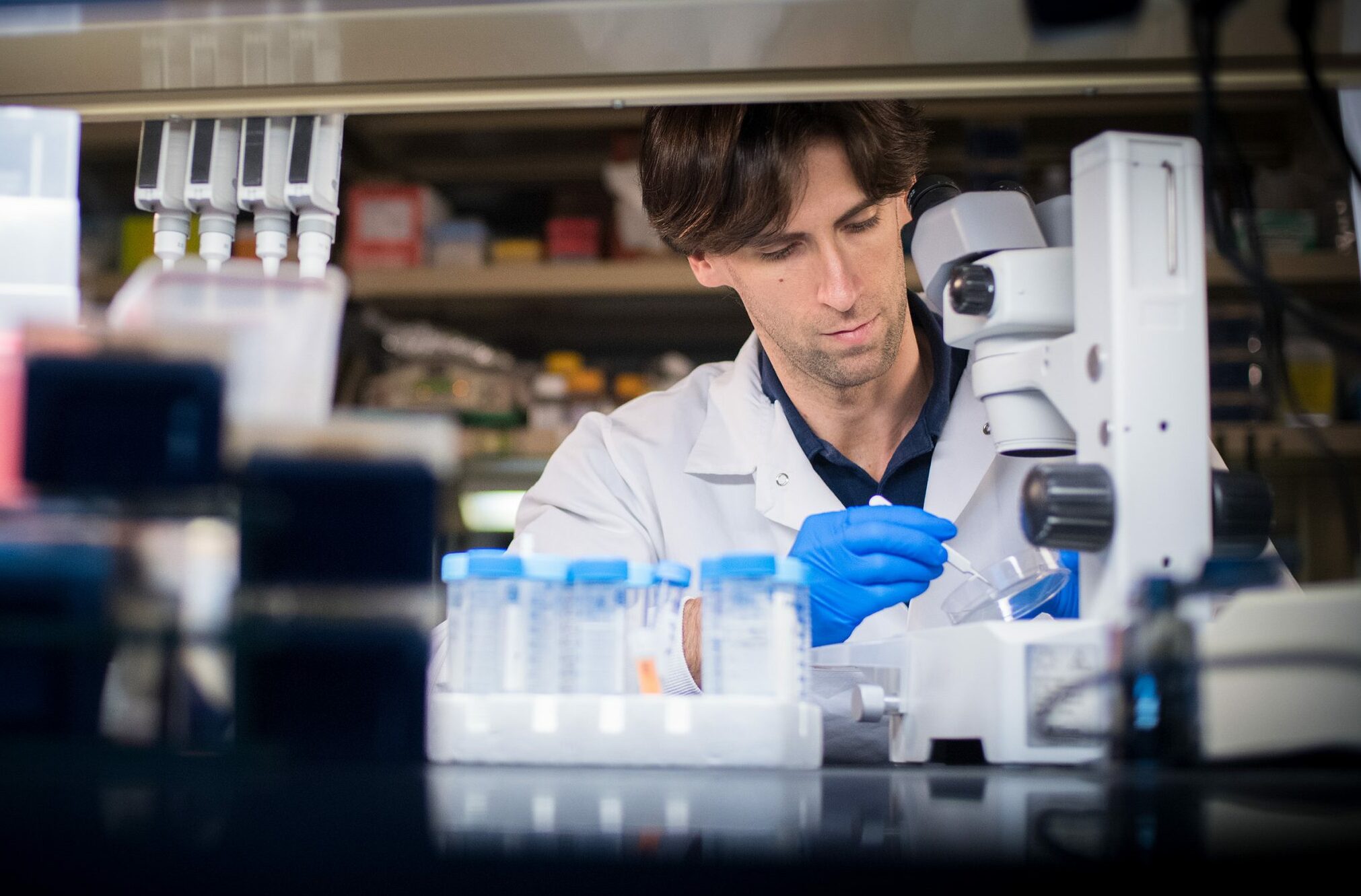Chronic myeloid leukaemia

What is chronic myeloid leukaemia (CML)
Chronic myeloid leukaemia (CML) is a type of leukaemia and therefore a type of blood cancer. The word ‘chronic’ in the name indicates that the disease may develop slowly. The word ‘myeloid’ refers to the type of blood cells affected, which are called myeloid cells.
In CML, the myeloid cells in the bone marrow multiple uncontrollably and the cells may not be fully developed and mature. The myeloid cells cannot be considered completely normal and may function to fight infection but not as well as they should.
Chronic myeloid leukaemia (CML) symptoms
Symptoms of chronic myeloid leukaemia* are likely to develop slowly and in many cases patients may not experience any CML symptoms; however, there are some signs you can look out for:
- Frequent infections
- Fatigue and/or looking pale
- Unexplained weight loss
- Night sweats
- Bone pain
- Bruising and bleeding easily
- Unexplained weight loss
Signs of CML are often similar to symptoms experienced in the main types of leukaemia. If you’re experiencing one or more of these symptoms, it’s very important that you see your GP and ask for a blood test. If your symptoms are a type of leukaemia, early detection can significantly improve the success rate of your treatment and recovery.
How does CML develop?
CML develops in white blood cells called myeloid cells in the bone marrow. The bone marrow is the soft inner part of the bones, where new blood cells are produced.
Every blood cell grows from a stem cell in the bone marrow.
Normally, the stem cells make an early stage of the blood cell called a blast. These blasts should develop into healthy blood cells.

In the case of myeloblasts, these derive from myeloid stem cells, and normally develop into fully functioning myeloid cells, platelets or red blood cells. There are several types of myeloid cells which have different functions, such as fighting viral and bacterial infections and preventing the spread of tissue damage.
Myeloid cells mature and develop to form red blood cells, platelets and other types of white blood cells such as monocytes and granulocytes. A myeloid stem cell becomes one of three types of mature blood cell,
- Red blood cells that carry oxygen to all tissues of the body.
- Platelets that form blood clots to stop bleeding.
- Granulocytes (white blood cells, including neutrophils and monocytes) that fight infection and disease.
CML occurs when a myeloid cell develops changes/alterations (mutations) in its DNA. A cell’s DNA controls how a cell develops and functions, to multiply at a set rate and to die at a set time. A cell with altered DNA may be unable to fully develop and mature properly to fulfil its function to protect against infection. In addition, the usual controls for growth and dying may be lost, thereby allowing the resulting abnormal cells to continue to multiply quickly. The abnormal myeloid cells could now be called leukaemia cells or CML cells.
When CML develops, any of the types of myeloid cell may multiply uncontrollably however, this is often granulocytes. These CML cells may multiply and survive better than normal cells. As the CML cells accumulate and begin to fill up the bone marrow, they prevent it from producing healthy blood cells. As a result, the number of healthy blood cells may be lower than normal, red cells, platelets and white blood cells.
This can lead to:
Anaemia
Where there is a low number of red blood cells in the blood which can cause fatigue and shortness of breath.
Neutropenia
Where there is a low number of white blood cells so that the immune system cannot function normally to fight infections.
Thrombocytopenia
Where there is a low number of platelets which can cause unexplained bruising or bleeding.
CML is often described as having three stages.
As the amount of immature myeloid cells/ blast cells increases in the blood and bone marrow, there is less room for healthy white blood cells, red blood cells, and platelets. The number of blast cells in the blood and bone marrow and the severity of signs or symptoms are used to determine the phase of the disease.
Chronic phase
Many patients are diagnosed during the chronic phase. Normally too many granulocytes are being produced. The symptoms can often be vague but may include tiredness, weight loss. The chronic phase is often associated with an increase in number of white blood cells and platelets. Fewer than 10% of the cells in the bone marrow and blood are blast cells.
Accelerated phase
If chronic CML is not treated, CML may progress to the accelerated phase. Symptoms will be more noticeable such as increased fatigue and further weight loss. 10-19% of the cells in the bone marrow and blood are blast cells.
Blast phase
In the blast phase, the leukaemia will become more aggressive and develop quicker. Symptoms may be much more noticeable and affect everyday life, someone with this phase of CML may feel very unwell. More than 20% of the cells in the bone marrow and blood are blast cells
Philadelphia positive CML
Philadelphia chromosome positive (PH+) is observed in 95 % of all CML patients. The Philadelphia Chromosome is a well-understood change in the DNA of the leukaemia cells and develops when a gene called ABL1 on chromosome 9 breaks off and attaches to another gene called BCR (breakpoint cluster region) on chromosome 22.

The result is a new gene called BCR-ABL1 which results in the cells making too much of a protein called tyrosine kinase. The extra protein encourages the leukaemia cells to grow and multiply.
There are targeted cancer drugs called tyrosine kinase inhibitors (usually imatinib) which are used to block the protein which helps stop the leukaemia cells from multiplying.
Only 5% of CML patients do not have the Philadelphia Chromosome/ BCR-ABL1 gene and this is called Atypical CML.
Searching for answers – Leukaemia UK funded research
Cancer cells will do anything to survive. Dr Vignir Helgason is exploiting weaknesses in their methods, to improve treatment for chronic myeloid leukaemia and help more people live for longer.

Treatment for chronic myeloid leukaemia
Treatment options for CML** are likely to vary depending on the stage of CML and the patient’s overall health and symptoms. The main treatment options for CML can include:
- Targeted cancer drugs
- Chemotherapy
- Stem cell transplant
Your doctor will be able to talk you through the different treatments for CML, and which could be most effective. They will also talk you through possible side effects and will be able to answer any further questions you have about CML.
At Leukaemia UK, we firmly believe that research has the power to make a difference and truly change lives. Our research team are constantly researching kinder and more effective treatments for different types of leukaemia, including CML.
References
Facts and statistics quoted on this page are derived from a number of sources which include: The Office of National Statistics (ONS), Cancer Research UK (CRUK), Haematological Malignancy Research Network (HMRN), Blood Cancer UK (BCUK), Lymphoma Action & Myeloma UK
*CML Symptoms – Source: Cancer Research UK
**CML treatment – Source: Cancer Research


